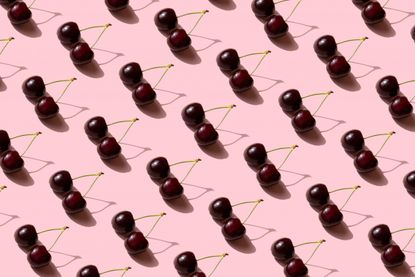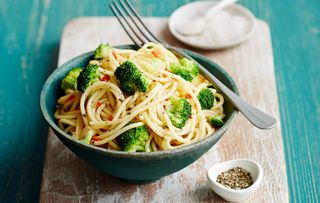What is the gout diet and can it ease gout symptoms?
If you suffer from gout, you probably already know that the pain can be subsided with some changes to your lifestyle and diet routine.


The gout diet is by no means a cure for the condition but it could help to lower the chance of recurring attacks and slow the progression of damage to the joints.
While you’re likely to still need medication on the gout diet, changes to your lifestyle eating habits will also help to manage the pain.
As it’s a form of arthritis, gout is centralised around a joint in your body. It occurs when there are high levels of uric acid, produced when the body breaks down the chemical purine, in your blood which causes crystal-like formations in the area.
Everyone’s body has naturally occurring levels of purine but it’s also found in particular food, so by avoiding those foods through the gout diet you can limit the excess production of purine in your body.
While this is a diet that encourages healthier eating, as losing weight lower uric acid levels and reduces gout attacks, it is not a weight loss diet. The gout diet is a suggested programme, advised by doctors, to incorporate foods and drink into your diet that help to reduce the over-production of uric acid.
What is the gout diet and can it ease gout symptoms?
The overall aim of the gout diet is to encourage a healthier approach to eating, in order to subside symptoms.
As Nutritionist Resource member, Sonal Shah tells GoodtoKnow, “Certain foods are naturally high in purines, these include: red meats, organ meats, certain seaood and alcohol that the body breaks down into uric acid which can crystallise in the joints, eventually triggering a gout attack.
GoodtoKnow Newsletter
Parenting advice, hot topics, best buys and family finance tips delivered straight to your inbox.
“So changing the diet alone by avoiding foods that trigger inflammation [can help] and this includes following a low inflammatory diet that is low in sugar, sugary drinks, coffee, alcohol – especially beer.”
However, if you have not been diagnosed with gout and have symptoms of sudden severe pain in your joints (usually the big toe, fingers, wrists, elbows or knees) or red, hot and swollen skin over the affected joint, then you should immediately visit you GP. These are the symptoms of gout and if not treated medically, it could cause lasting damage to your joints.
The gout diet aims simply to ease symptoms of pain and inflammation after diagnosis and treatment.
What can you eat on the gout diet?
The gout diet is certainly not as restrictive as other diets designed to treat medical conditions, such as the diverticulitis diet or the gastritis diet. However, there are certain compromises and additions that you need to make in your diet to adhere to it.
As Sonal Shah says, a low sugar and more alkalising, anti-inflammatory diet is required. But what does this actually mean?
“Cherries.” Sonal says, “Fresh or frozen is the number one food for gout and should be consumed frequently if not every day. [Cherries are] rich in vitamin C and antioxidants [which] have been shown to reduce uric acid levels.
“Vitamin C rich foods: peppers, green vegetables, citrus fruits and berries.”
Sonal recommends vegetables like celery and known anti-inflammatory foods like ginger and turmeric. She also suggests, “A high fibre diet with wholegrains and beans and legumes helps [your] gut and colon to clear out toxins out of the body.”
This is what a day on the gout diet might look like…

Breakfast
2 x slices of whole grain toast with low-fat butter
Handful of cherries
Water
Lunch
Broccoli and salmon wholegrain pasta
Water or non-caffeinated beverage, such as herbal tea
Snack
Mixed green salad with celery, tofu, nuts and seeds
Balsamic and olive oil dressing
Dinner
Roasted chicken breast with steamed green vegetables
30g wholegrain rice
Handful of berries or melon
Water
There are some studies which suggest that drinking coffee regularly actually reduces the risk of gout. However, it’s detrimental to other conditions so as when making any substantial changes to your diet, you should consult your doctor.
What's the best thing to drink if you have gout?
“More hydration with water is essential to flush out toxins and prevent dehydration, which can trigger gout symptoms too.” Sonal advises, “Cherry juice, ideally the concentrate, which can be diluted, can also be drunk.”
It’s also worth noting that fresh juices made with celery, pineapple and carrots, which deliver vitamins, mineral and enzymes to counteract the build up of uric acids and speed up the clearing out of other inflammatory compounds, are a welcome addition to your daily diet.

Grace Walsh is a health and wellbeing writer, working across the subjects of family, relationships, and LGBT topics, as well as sleep and mental health. A digital journalist with over six years experience as a writer and editor for UK publications, Grace is currently Health Editor for womanandhome.com and has also worked with Cosmopolitan, Red, The i Paper, GoodtoKnow, and more. After graduating from the University of Warwick, she started her career writing about the complexities of sex and relationships, before combining personal hobbies with professional and writing about fitness.
-
 Record number of families opt-out of claiming child benefit, but the decision could have serious repercussions for your future
Record number of families opt-out of claiming child benefit, but the decision could have serious repercussions for your futureStark warning for families as number of parents who opt-out of receiving child benefit reaches 10-year high
By Sarah Handley Published
-
 Does Prince Harry and Meghan Markle's new family-friendly Netflix show mean we'll see more of Archie and Lilibet? We share everything we know
Does Prince Harry and Meghan Markle's new family-friendly Netflix show mean we'll see more of Archie and Lilibet? We share everything we knowRoyal fans are hoping to catch a glimpse of the youngsters
By Charlie Elizabeth Culverhouse Published